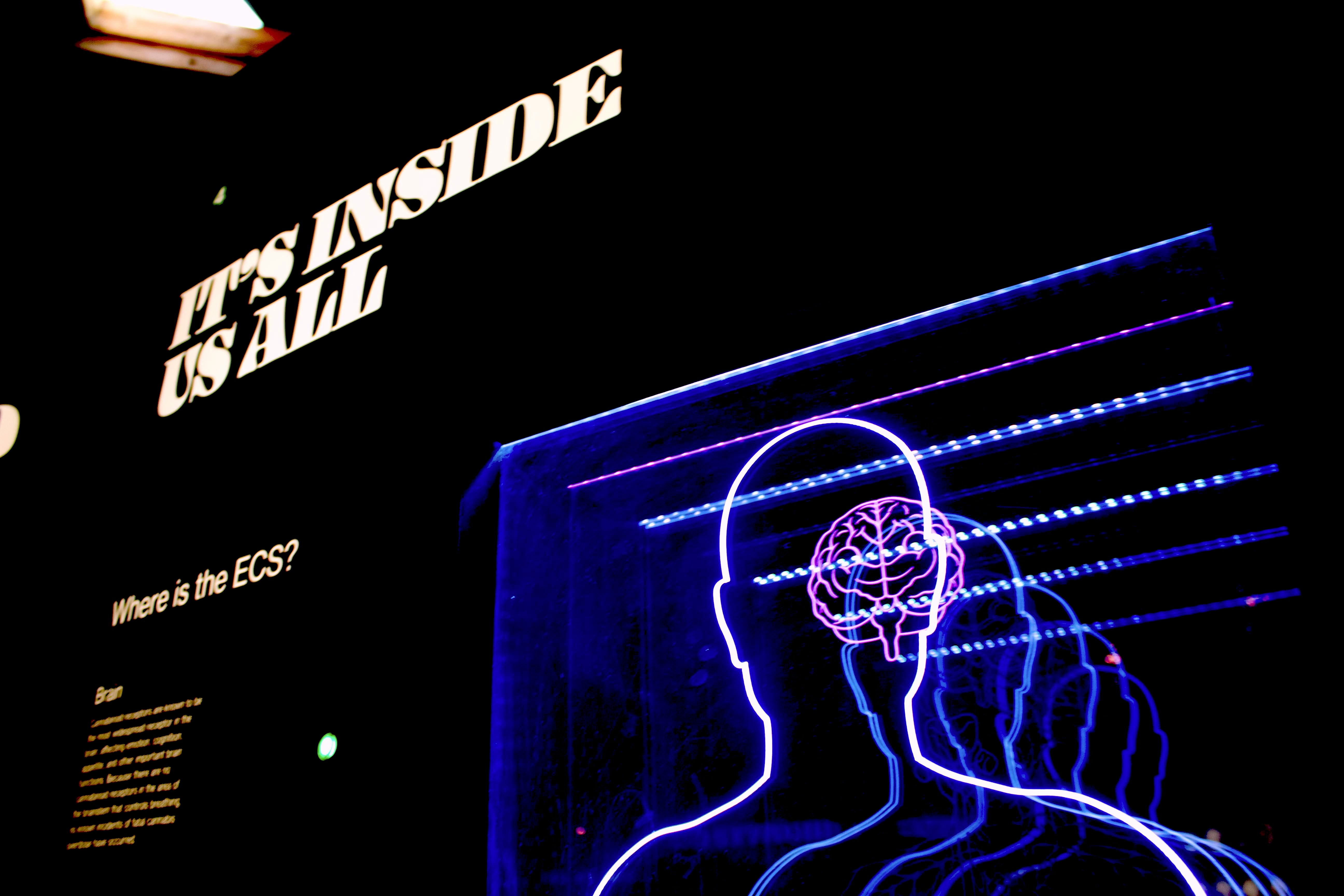Second Brain Method
What Is Second Brain Studying? How To Build And Use One
What is Second Brain studying? Find out what it is and how to effectively create and utilize your second brain for improved knowledge retention.
May 25, 2024
Do you want to maximize your learning potential and take your memory skills to the next level? Dive into the world of what is Second Brain studying and the revolutionary Second Brain method. This innovative approach taps into your brain's full potential, helping you retain information efficiently and enhance your cognitive abilities. Discover how this method can transform how you learn, study, and ultimately excel in your academic or professional endeavors. Say goodbye to traditional learning techniques and welcome a new era of studying.
Table of Contents
What Is Second Brain Studying?

I'd like to go into more detail about Second Brain studying. This method allows users to organize and manage information to enhance learning, productivity, and personal growth. It involves creating a digital or analog system that extends your mind, capturing and storing knowledge, ideas, and insights. This concept is often associated with productivity expert Tiago Forte, whose aim is to enhance learning and creativity by offloading cognitive tasks from your mind to a reliable digital repository.
An Overabundance of Information Overload: The Background Story
According to the productivity expert, the sheer amount of information flooding our brains daily is overwhelming. Information Overload has long since become Information Exhaustion, taxing our mental resources and leaving us constantly anxious about forgetting something. In this state, our minds can't store as much as we would like which can be bad for studying.
The Digital Repository: Your Reliable Backup While Studying
Having a digital repository you can rely on can significantly ease the burden on our brains while studying. It helps to have a system you can fall back on for information while studying. This easy-to-use system can help you manage and keep track of all the information you need to learn. It also lets you offload the cognitive tasks of recalling and organizing information to a reliable, digital repository, offering you a centralized location for storing all your ideas and insights.
Related Reading
What Is A Second Brain?

A Second Brain is a personal knowledge management system that is an external repository for capturing, organizing, and retrieving information and ideas. BASB is designed to help you free up your brain’s resources by storing notes, ideas, to-dos, and projects in an external digital brain.
Tiago Forte’s building a Second Brain is a practical methodology for saving and retaining the information our brain processes and the ideas and connections we make. We can expand our memory and intellectual capacity with modern technology and tools around us. It specifically focuses on saving information and preserving it for later and seeing through all the ideas we get.
Why You Need To Build A Second Brain

1. Enhanced Memory and Recall
Building a Second Brain significantly improves memory and recall by reducing cognitive load on the brain. When studying, well-structured repositories of notes, summaries, and references make it easier to remember details.
2. Improved Organization
A Second Brain helps organize study materials logically with tools like tags, folders, and databases. This organization ensures that materials are systematically arranged, easily accessible, and minimizes time spent searching for information.
3. Increased Productivity
Outsourcing information storage and organization to a Second Brain frees up mental space for critical thinking and creative tasks. This boost in productivity allows for a focus on understanding and applying knowledge, leading to better academic performance.
4. Better Learning and Retention
A Second Brain facilitates better learning and retention through regular review and reflection, reinforcing understanding and integrating new knowledge more deeply. Continuous engagement with material helps solidify learning and improve long-term retention.
5. Creative Insights and Connections
A Second Brain encourages synthesizing information from various sources, fostering creative insights and connections. This holistic approach leads to unique perspectives and greater ability to apply knowledge in diverse contexts.
Streamline Your Research Workflow with Otio
Knowledge workers, researchers, and students today face content overload, dealing with fragmented and complex tooling. Many settle for complicated apps. Otio provides an AI-native workspace for researchers, helping collect data sources, extract key takeaways, and create draft outputs.
Let Otio be your AI research and writing partner—try Otio for free today!
How To Build And Use Your Second Brain In 9 Steps

I follow Tiago Forte's methodology, which includes two core elements: C.O.D.E. (Capture, Organize, Distill, Express) and P.A.R.A (Projects, Areas, Resources, Archives). C.O.D.E. is the workflow for using and maintaining a second brain. P.A.R.A helps organize notes into folders.
1. Identify Your Mission and Objectives
Starting with the why is crucial. You decide what you want to achieve - be it in schooling, career, art, or self-development. Your objective will determine how you organize and operate your second brain.
2. Select Your Digital Tools
Choose tools that suit your workflow and interests. It can be task management software, online storage services, or note-taking applications like Otio. Compatibility with multiple devices is essential for smooth integration into daily life.
3. Capture Information Consistently (Capture)
Develop a habit of consistently capturing information, including personal ideas, notes from books, articles, seminars, and web clippings. Organize them in your chosen tools to build a repository representing your interests and expertise.
4. Organize with Projects and Areas (Organize with PARA)
Create projects and areas to organize your second brain. Areas reflect general themes or topics, while projects are time-bound with specific goals. This structure helps manage information with flexibility and focus.
Assign each piece of data to one of these groups: Projects, Areas, Resources, Archives. Projects involve active endeavors with deadlines. Areas deal with long-term responsibilities and goals. Resources are miscellaneous, and Archives hold completed or less relevant items.
Projects
These are active projects you’re working on. Projects have a fixed timeline, clear deadlines, and specific tasks you need to complete. Projects can be anything from assignments learning a new language.
Areas
Areas are long-term responsibilities and future goals. They focus on specific domains in your studies like the different courses you are taking in school.
Resources
Think of Resources as your Misc folder. If you find something interesting that doesn’t have a clear connection to one of the active projects or areas, dump it here. You can create Resources for hobbies and interests, life hacks, or any other topics you may want to reference at some point in the future. For example, I recently came across a cool AI coloring page tool, and saved in to my misc folder so that I can revisit on the weekend when I have more time. A traditional bookmark wouldn't have helped me in this case.
Archives
The Archives folder includes completed, canceled, or deferred projects. Any projects you’re not actively working on should be in the Archives folder. The Archives are a valuable resource when starting new projects, so you should start moving notes here rather than deleting them.
5. Create a Tagging System
Develop a tagging system to add metadata to your notes. Tags enhance search optimization and provide more information. Use tags for subjects, themes, or information categories for smoother organization.
6. Review and Iterate Frequently
Set aside time for regular evaluations of your second brain. This could be a weekly or monthly routine. Review notes, assess the system's effectiveness, and identify gaps or areas needing more research. Iterative improvement is a key part of the process.
7. Adopt the Method of Progressive Summarization (Distill)
Progressive summarization helps extract crucial details from notes. Gradually layer and edit your notes, highlighting key takeaways. This method enhances knowledge retention and comprehension over time.
8. Include Your Second Brain in Everyday Workflows (Express)
Integrate your second brain into daily tasks. Whenever fresh information or ideas come to mind, jot them down and organize. Use your second brain to support your ongoing initiatives and consult it frequently for guidance.
9. Develop a Growth Attitude
Approach this methodology with a growth mindset. Regard your second brain as an ever-evolving, dynamic entity that adjusts to your needs. Continuously seek ways to enhance your knowledge base and organizational structure.
Related Reading
Build Your Second Brain With Otio — Try Otio for Free Today
Otio is the ultimate workspace for knowledge workers, researchers, and students who struggle with content overload. In today's information age, the volume of data available to us is overwhelming, making it difficult to stay organized and productive. Otio offers a solution by providing an AI-native workspace that streamlines the research and writing process for individuals needing a robust tool to manage their information.
Collect Data from Various Sources with Ease
Otio simplifies the data collection process by allowing users to gather information from various sources, including bookmarks, tweets, books, PDFs, and YouTube videos. Instead of using multiple disjointed tools to compile data, Otio centralizes all your sources in one convenient location.
Extract Key Takeaways Effortlessly
One of Otio's standout features is its ability to extract key takeaways from the sources you collect. Through detailed AI-generated notes and source-grounded Q&A chat, Otio helps you distill complex information into succinct, actionable insights. This feature is particularly beneficial for researchers who need to synthesize vast amounts of data quickly and efficiently.
Create Drafts and Outputs with Ease
With Otio, transitioning from a reading list to a first draft is seamless. By leveraging the data you've collected, Otio assists you in creating draft outputs based on your sources. This streamlines the writing process and enables you to produce high-quality research papers and essays in less time.
AI-Generated Notes for All Your Bookmarks
Otio's AI-generated notes feature makes it easy to review and reference key points from your research. Whether you're working with YouTube videos, PDFs, articles, or other sources, Otio's AI-generated notes provide a comprehensive overview of each piece of content, enhancing your understanding and retention of the material.
Chat Functionality for Enhanced Collaboration
Through its chat functionality, Otio allows you to engage with individual links or entire knowledge bases. Like ChatGPT, Otio's chat feature facilitates collaboration and discussion around your research, enabling you to exchange ideas and insights seamlessly.
AI-Assisted Writing for Faster Results
Otio's AI-assisted writing functionality takes your research and writing to the next level. By leveraging AI technology, Otio helps you compose well-structured and compelling content, streamlining the writing process and enabling you to produce high-quality work efficiently.
Try Otio for Free Today
If you're a knowledge worker, researcher, or student looking to streamline your research and writing process, Otio is the perfect tool for you. With its comprehensive set of features, including AI-generated notes, chat functionality, and AI-assisted writing, Otio empowers you to tackle content overload and produce high-quality output faster.
Sign up for Otio today and experience the future of research and writing firsthand.




